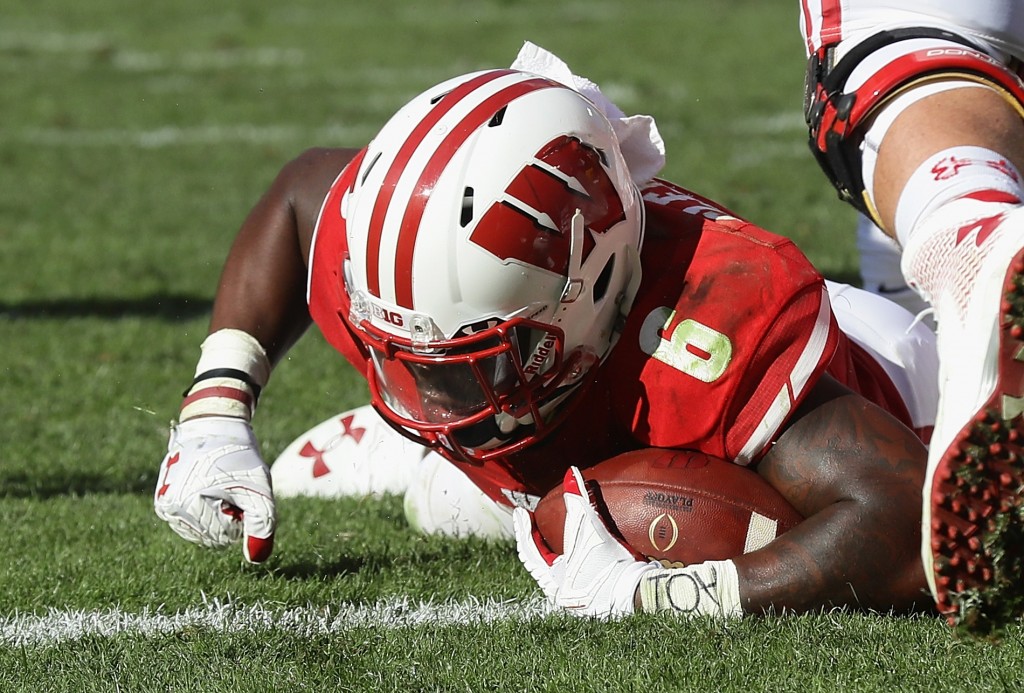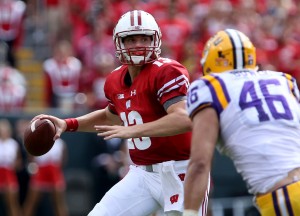- Messages
- 5,407
- Reaction score
- 311

Week one’s game between the Wisconsin Badgers and the LSU Tigers will not be examined by NCAA films at the end of the season. It was ugly. There were six combined turnovers, and the two teams completed fewer than 60 percent of their passes. Wisconsin escaped with the victory, which is really all that matters. However, moving forward, there are certainly areas that need to be improved upon.
1) The passing game
Prior to the match, Wisconsin’s need to “win” the passing matchup was highlighted. The Badgers did so mostly because of how atrocious LSU was through the air. Wisconsin still struggled in its own passing game. Quarterback Bart Houston completed just 19 of 31 passes for 6.6 yards per attempt. He barely cracked 200 yards in this, his first start for Wisconsin. Houston threw two interceptions and no touchdowns. If the Badgers hope to defeat more highly ranked opponents this year, they will need more impact out of Houston and the passing offense both in terms of efficiency and quality of plays. The positive takeaway is that the team found success in the fourth quarter, completing five of six passes on its way to the eventual game-winning drive.

GREEN BAY, WI – SEPTEMBER 03: Corey Clement #6 of the Wisconsin Badgers scores a touchdown during the third quarter against the LSU Tigers at Lambeau Field on September 3, 2016 in Green Bay, Wisconsin. (Photo by Jonathan Daniel/Getty Images)
2) Breaking off longer runs
This team will also need to see more from its running game. None of the offense was great, which was why it managed just 16 points despite receiving three turnovers. The rushing attack didn’t break any big runs against LSU and averaged just 3.2 yards per carry. The team’s longest tote was a 14-yard scamper by Dare Ogunbowale. The offensive line played pretty well, so this comes down to the backs finding better paths through second and third lines of defense. According to Madison.com, the Wisconsin Badgers “had 13 plays against LSU in which a runner gained three or more yards before contact. The Badgers had only one game in 2015 against a major conference opponent in which they produced more such plays.”
Corey Clement was okay but nothing special in his 21 attempts, by far the most on the team. While some of that can be chalked up to a really good defense on the other side of the ball, the Badgers still have to prove they are over the issues that plagued this run game all of last season. It would certainly help to see Clement get going and start showcasing some of those huge runs we saw earlier in his career.
3) Executing a gameplan
The opposing rushing game, led by Leonard Fournette, was more successful but Wisconsin did a solid job of slowing down the Heisman hopeful. He did grab 138 yards on just 23 carries though. The Badgers surely had a gameplan of shutting down Fournette and forcing Brandon Harris to beat them through the air. In a way, that all worked out perfectly. And yet, Fournette was not really shut down at all. LSU had an especially high success rate running in the second half, where it accumulated 100 of its 126 team yards. Moving forward, the Badgers can probably allot even more resources to their designed technique in such instances. There was no reason to allow Fournette any seven-man boxes with the way Harris was playing behind center.

GREEN BAY, WI – SEPTEMBER 3: Bart Houston #13 of the Wisconsin Badgers drops back to pass in the first quarter against the LSU Tigers at Lambeau Field on September 3, 2016 in Green Bay, Wisconsin. (Photo by Dylan Buell/Getty Images)
4) Limiting turnovers
The three turnovers also need to be ironed out. If Wisconsin had held onto the football, this game wouldn’t even have been in doubt during the Tigers’ final drive of the game. An interception by UW clinched the win, but mistakes earlier frankly kept the fifth-ranked team in the country in the contest.
Given Akron’s fast pace to its offense, Wisconsin can’t give up short-field situations for its defense to try and hold on to. Avoiding turnovers deep in its own territory may be the biggest help to a successful contest on Saturday afternoon.
5) Converting opportunities
A complete football team will need to do all the previous things mentioned while also being a more efficient club. Wisconsin squandered opportunity after opportunity, both in the redzone and otherwise. It was just 3-of-15 on third down. Despite a dominant advantage in time of possession (nearly 37 minutes to 23 minutes by game’s end), it led just 6-0 well into the second half.
Perhaps it is splitting hairs in attempting to label this a Wisconsin win or an LSU loss. Either way, the Badgers come out on top on the ledger at 1-0. However, the latter implies there are more areas for improvement for the victors, which is the case here.
The post Wisconsin Badgers Football: 5 Areas to Improve On Against Akron appeared first on Madtown Badgers.
Continue reading...
